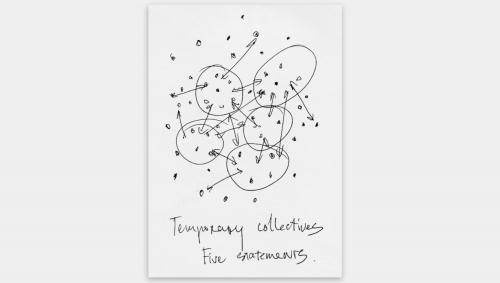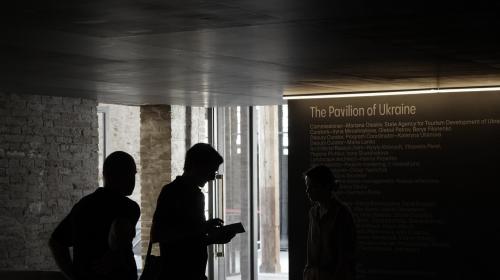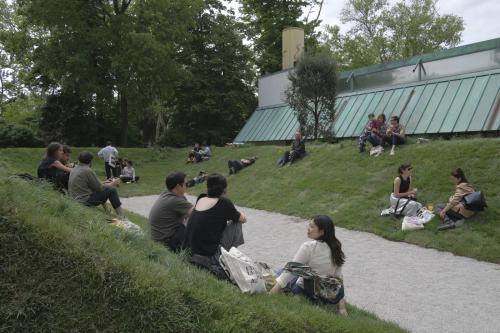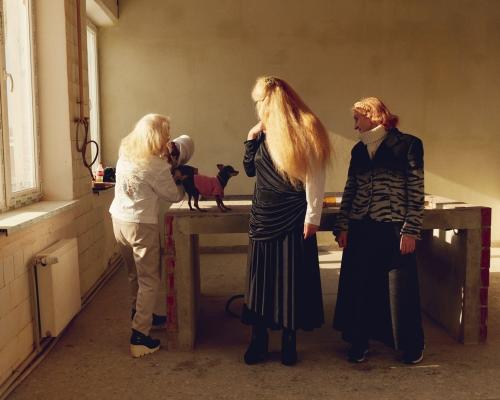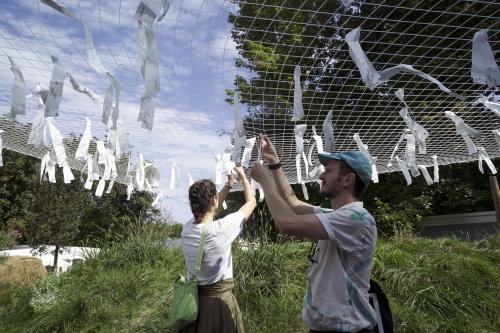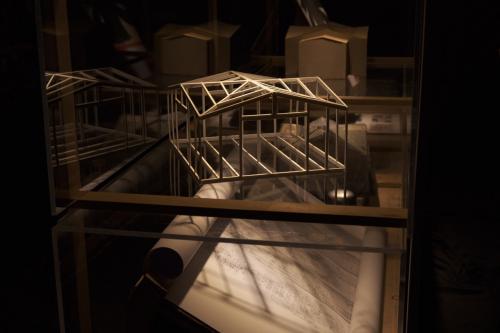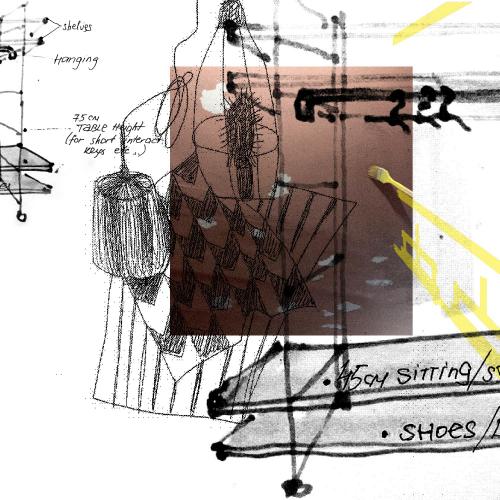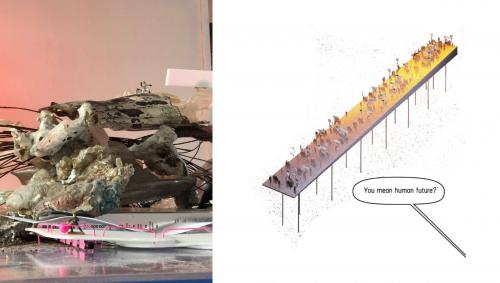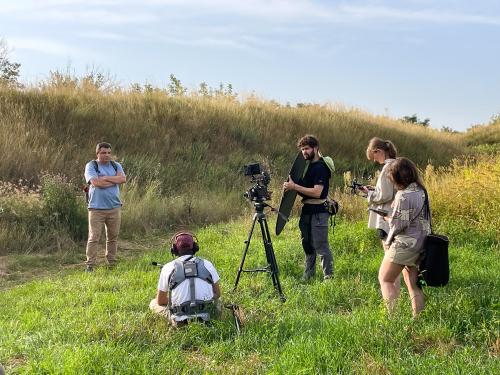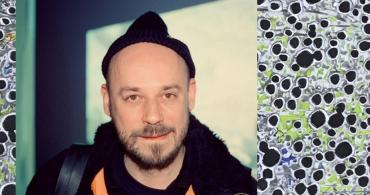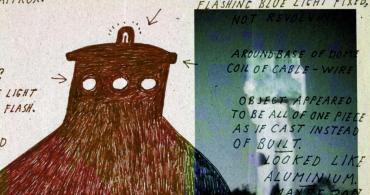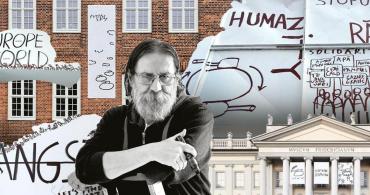A Guide through the Ukrainian Pavilion at the Biennale Architettura 2023 in Venice
Before the Future Pavilion
Ukrainian exhibition at the Biennale Architettura 2023 is titled «Before the Future» this year. The show spreads around two locations: Arsenale and Giardini. Both parts of the project present fortified spaces, «formal quotations to unusual structures,» that have become symbols of security for Ukrainian society since Russia's full-scale invasion of Ukraine. The team provides more information on the official website.
«These spaces will provide a forum for a dynamic public program bringing together more than thirty Ukrainian architects, artists, and specialists from numerous fields to work with the subtopics of the Biennale's central concept — the Laboratory of the Future,» the Ukrainian curators say. «Before the Future» aims to draw attention not only to the future but also to the past and present conditions essential for building the future safely.
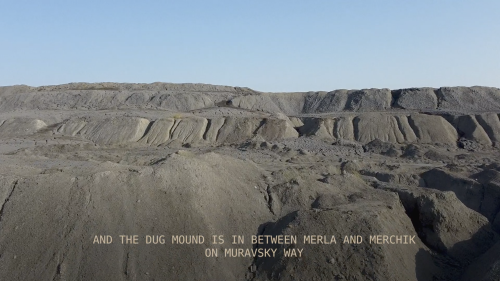
Installations in Arsenal and Giardini
The Ukrainian project's first structure, located in Arsenal, is a space with a low ceiling that serves as a symbolic shelter. It envelops the viewer with thick walls and a closed sky, creating a sense of security. This structure embodies what the Pavilion team calls the «new comfort,» where claustrophobic and windowless spaces become vital for survival plans and hope for the future.Curators say, «The roof always gives a sense of safety and forms new relationships with humans and non-humans. Life under the constant threat from the sky has led to various household forms of fencing off the danger: tape on windows, the "two-walls rule," curtains, piles of books, etc.,»
«The ongoing war brings us back to a closer relationship with the land, which hides, protects, gives shelter, feeds, and stops enemy armies. Under the open sky, next to the Library Pavilion, earthen ramparts will become a place for all visitors to the Biennale,» explain the curators of the Ukrainian project.
Curatorial Statement
Ukrainian Pavilion’s curatorial team at the Biennale Architettura 2023:Iryna Miroshnykova, an architect and urban development researcher who is currently working on her doctoral dissertation exploring the socio-economic and planning features of Ukrainian monofunctional cities. She is a partner at the independent architectural bureau FORMA and a co-founder of the interdisciplinary institution Pavilion of Culture, where she curates the architectural research department.
Oleksii Petrov, an architect, founder of the architectural office FORMA. Just like Miroshnykova, Petrov is a co-founder of Pavilion of Culture, where he curates architectural research.
Borys Filonenko, an independent curator, art critic, and editor-in-chief of Ist Publishing (Kharkiv). He was a co-curator of the Ukrainian National Pavilion at the Biennale Arte 2023 in Venice, the Second National Biennale of Young Art (Kharkiv, 2019), exhibitions «Aeneas Passes On. Artists of the Present Face to Face with the Past» (Kharkiv, 2019) and «Shadows of forgotten ancestors» (Kyiv, Lviv, 2016). In 2015-2018, he worked as a curator of the Kharkiv Come In gallery, and in 2017-2021, he worked as a teacher and curator at the Department of Humanities of the Kharkiv School of Architecture.
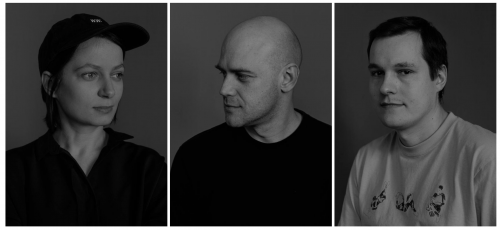
«After more than 400 days of living at war, we see that stories cannot be told without a certain defense line. Wherever storytelling takes place, there is something and someone that allows that voice to be heard relatively safely. Fortifications can be of natural, non-human, human, or hybrid origin. They can be well-planned or haphazard…This year the Ukrainian Pavilion becomes such a protective structure itself,» the team explains. Curators emphasize that for Ukrainian architects, the future coexists with the constant destruction of past and present spaces.
According to the curators, the future-oriented imagination was a relic and somewhat dangerous way of thinking of previous centuries. This linear view worked as a constant dissatisfaction with the present, fueling the desire for change. At least, that was the case until 2022. Today, Ukrainian resistance offers new and diverse concepts of the future, and the daily actions of all participants delineate its forms.
«This kind of future is based on cooperation between self-organization, personal contribution, and state-building... Such a future takes care of what is already here... This future is open to today's sincere collaboration and worth fighting for. Establishing connections here precedes any further constructions,» the statement concludes.
Collectives and their Manifestos
The central part of the «Before the Future» program started in mid-2023 and will continue until November 26th. It involves five temporary collectives, each presenting their manifestos.
deconstructed
The presentation of the deconstructed manifesto by the first group took place from August 8th to 21st in the Giardini. The collective included Nikita Bielokopytov, Daria Borovyk, Dmytro Gurin, Anton Oliynyk, Oleksii Pakhomov, and Mariia Pakhomova.
The group focused on parallel processes of construction and understanding of ruins, as well as the questions that accompany them, such as:
— Is there a future for cities that no longer exist?
— Is it possible to rebuild cities without having to create new buildings?
— Is it enough to bring peace to a city for people to return?
— Will they return after three, five, ten (or even more) years of war?
— Will the changes in Ukraine affect global migration patterns?
«We are at a point where each question only gives rise to new ones. But if questions are all we have now, can they become our building material?.. Our project invites the visitors of the Biennale to answer questions or ask their questions and to engage in a common reflection on the restoration of Ukraine, gradually materializing its future,» the participants explain.
What cannot be lost
The second manifesto, «What cannot be lost,» will run from August 21st to September 17th. It will be presented by Oleksandr Burlaka, Kateryna Semenyuk, Oksana Dovgopolova, Sasha Kurmaz, Ivan Grabko, The Center for Spatial Technologies (CST) and Prykarpattian Theater.
In this project, architects, artists, sociologists, and researchers are collaboratively building an intangible archive from fragments of the past. The team is already working on a spatial model to collect memories of people whose lives were interrupted by an airstrike on the Mariupol Drama Theater.
«We hold in our hands the fragments of the destroyed world we love. We are drawing an image of a new Ukraine, a new Europe. Certain places in this world are still inaccessible, and others would simply be immoral to restore. We are forming an imaginary memory architecture, outlining an emptiness that cannot be filled. Our first commemorative gesture is a conversation about that which we cannot lose if we are to continue to be ourselves,» the group explains.
The Beauty of Care
This group, called a 'care collective', includes Anna Dobrova, Olena Orap, Anna Pashinska, Tanya Pashinska, Dasha Podoltseva, Oleksandra Sakharuk, and Yulia Golyuk. During the exhibition, they rallied around care as an architectural practice's fundamental but often overlooked element.In «The Beauty of Care,» the group starts from the vulnerability created by Russia's unwarranted invasion of Ukraine. The collective works on the idea of care as an integral part of architecture, primarily aimed at providing protection. The participants theorize about a new coordinate system with new agents of change that could respond to the threat of Russian aggression.
They ask questions such as:
— How does the war change the role of architects?
— What methods and motives do we have for care in architecture?
— How can care in architecture become our new normal?
— How can we find beauty in spaces of care?
March On
In the «March On» project, they focus on the symbol of movement into the future: the march. For example, the participants mention the miners' demonstrations of the 1990s, the Orange Revolution of 2004, the Maidan protests of 2013-2014, the urban initiative «March for Kyiv» in 2021, and many other collective actions of various scales. Such actions, the group believes, create a continuum in moments of discontinuity.«After Russia's full-scale invasion of Ukraine in 2022, alternative collective spatial practices emerged. The challenges of the destruction and contingencies that come with unjustified war and simultaneous processes of immediate recovery have become preconditions for developing a new architectural discourse. This discourse grows as a part of an emergent global commons — but only as long as the march continues,» as their manifesto states.
30%
The «30%» manifesto raises questions about the future of Ukrainian nature after the war. The collective includes Daria Borovyk, Nina Dyrenko, Daryna Pyrogova and Vadym Sidash.
According to them, approximately one-third of Ukraine's territories are no longer suitable for habitation or human use. Ironically, this land can be «returned to nature» as demanded by the EU Biodiversity Strategy for 2030. If it weren't for the war, this goal would have seemed unattainable. But what will these 30% look like, the participants ask.
«What will happen to our soil after the war? That in which food was grown. Much of it has been polluted after the explosions and can no longer be used for agriculture.
What will happen to our forests? Those that burned in the fighting or were mined. Now people are forbidden to go there because of the danger. Wild animals, however, still come there, unwittingly demining what is left of the forests.
What will happen to our rivers and seas? The Russians have destroyed large industrial facilities and sewage treatment plants that protected rivers and groundwater from pollution. Water from the occupied regions flows into the Azov and Black Seas, and then into the Mediterranean and on to the world ocean.,» the group writes.

